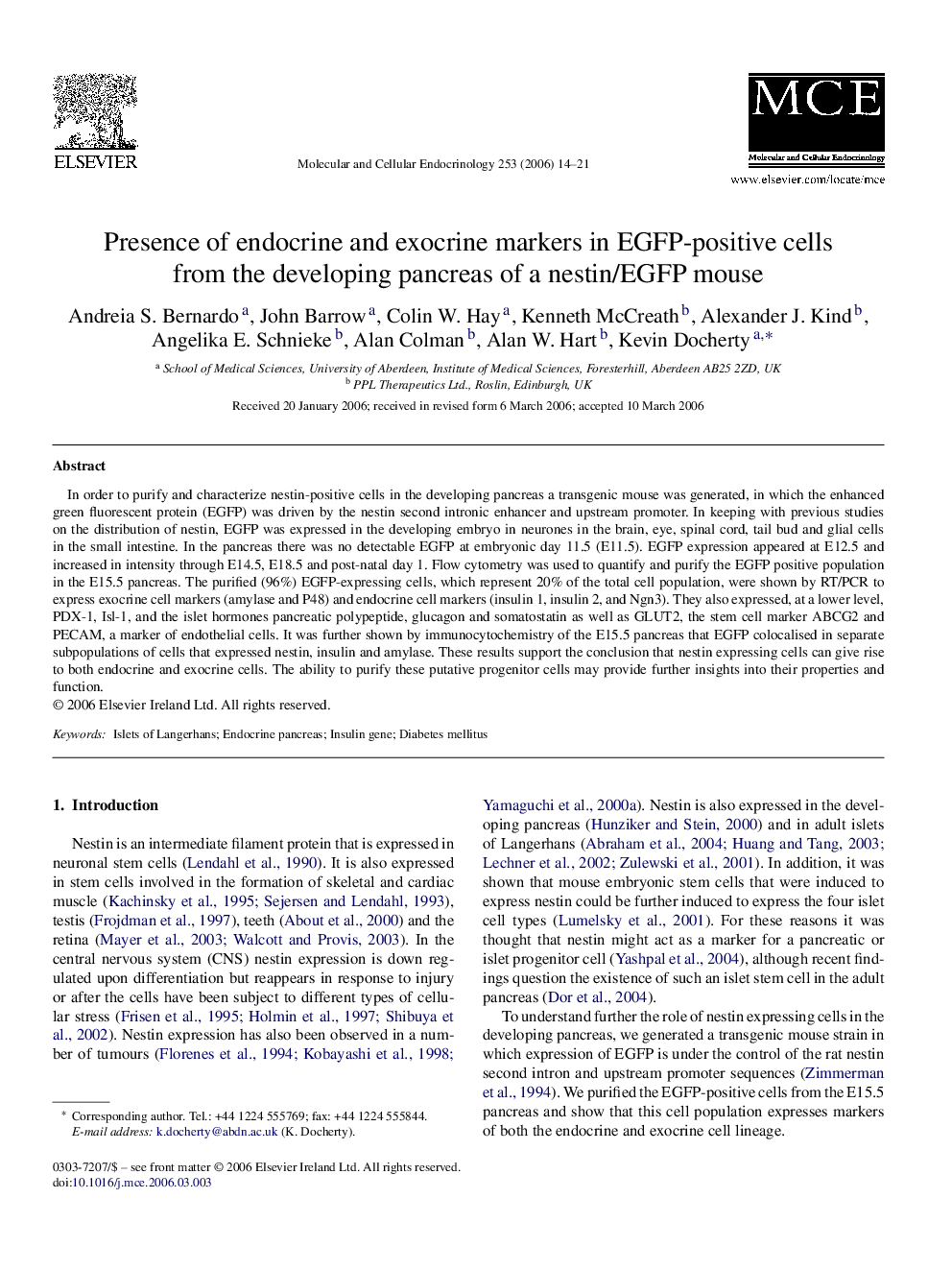| Article ID | Journal | Published Year | Pages | File Type |
|---|---|---|---|---|
| 2198143 | Molecular and Cellular Endocrinology | 2006 | 8 Pages |
In order to purify and characterize nestin-positive cells in the developing pancreas a transgenic mouse was generated, in which the enhanced green fluorescent protein (EGFP) was driven by the nestin second intronic enhancer and upstream promoter. In keeping with previous studies on the distribution of nestin, EGFP was expressed in the developing embryo in neurones in the brain, eye, spinal cord, tail bud and glial cells in the small intestine. In the pancreas there was no detectable EGFP at embryonic day 11.5 (E11.5). EGFP expression appeared at E12.5 and increased in intensity through E14.5, E18.5 and post-natal day 1. Flow cytometry was used to quantify and purify the EGFP positive population in the E15.5 pancreas. The purified (96%) EGFP-expressing cells, which represent 20% of the total cell population, were shown by RT/PCR to express exocrine cell markers (amylase and P48) and endocrine cell markers (insulin 1, insulin 2, and Ngn3). They also expressed, at a lower level, PDX-1, Isl-1, and the islet hormones pancreatic polypeptide, glucagon and somatostatin as well as GLUT2, the stem cell marker ABCG2 and PECAM, a marker of endothelial cells. It was further shown by immunocytochemistry of the E15.5 pancreas that EGFP colocalised in separate subpopulations of cells that expressed nestin, insulin and amylase. These results support the conclusion that nestin expressing cells can give rise to both endocrine and exocrine cells. The ability to purify these putative progenitor cells may provide further insights into their properties and function.
